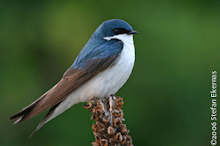New Facebook and Twitter Account!
Become a fan of the WildMetro group on facebook and follow WildMetro on twitter for updates, news, and upcoming events! Add any events or ideas of interest to the page and twitter account as well!
Wildmetro Member Discovers a First for the New York City area!
Wildmetro is pleased to say that a long-time friend and supporter discovered something interesting on our Superb Owl walk last week! Below is a picture of the fungi commonly known as Conifer Parchment that Gary Lincoff, one of the world's leading mushroom experts, says seems to be a first record for the NYC area! What a find!
Make sure to stay updated and come out to Wildmetro events to be able to be a part of amazing new discoveries and opportunities like this in the New York City area!
Written by Jenny Cocciardi.
Make sure to stay updated and come out to Wildmetro events to be able to be a part of amazing new discoveries and opportunities like this in the New York City area!
Written by Jenny Cocciardi.
“SUPERB OWL,” Not Superbowl
On the famous Sunday when thousands gather around their TV to watch football, Wildmetro and friends traveled to New York City’s largest park: Pelham Bay Park. It was a day full of nature, ice, snow, and of course, owls! Pelham Bay is known as the “hotspot” in the greater Manhattan area to spot owls (I know, wildlife in and around New York City? – Don’t be so surprised!). We started the hike on Hunter Island, and hiked our way through the evergreen groves. It was here where we first encountered two Long-Eared Owls.
It was a fun, bird-packed day full of wonderful people! Among the 20+ participants were many nature experts, including five wildlife biologists, an attorney who is a well-known amateur entomologist (and who also represents WildMetro in our efforts to protect natural areas), one of the world's leading mushroom experts, and a botanist who is the woodlands manager for Central Park. It was an international group, with people from Iran, Italy, South Africa, and Hungary. Among the non-naturalists were 3 college undergrads, several lawyers, a nurse practitioner and a family doctor. It was a day for the Wildmetro community to re-connect and make new friends, and was a day for us New Yorkers to step away from the fast-pace of the city and enjoy nature in its pristine and beautiful manner.
 |
| Photo taken by intern Jenny Cocciardi. |
· Long-Eared Owl- This owl will begin to arrive in the New York City area from late-November to mid-December and can be seen until mid-March. The long-eared owl is mottled brown in color with long ears poking out of the top of the head. They can get very big and are usually spotted to be the size of a crow. Look out for these birds near the trunk of the tree, in evergreen groves. These owls are nocturnal, however in the cold winter, it is not unusual to see a couple in trees close to each other soaking up the suns heat.
· Great Horned Owls- this owl is known to be in the area from late November to early March, as well. They are found in old pine groves and are known to be the largest of the “American” Owls. Look for a large owl varying in color from white to dark brown.
· Saw-Whet Owl- These owls are very small and can be found in the same date-range as the two mentioned above. They are earless with typical huge, yellow eyes and are brown in color. Look for these owls roosting in younger pines.
· Sometimes it is also possible to see the Snowy Owl, which can be recognized by its vivid white color, and the Barn Owl, recognized by its heart-shaped face.
 |
| Photo by Jenny Cocciardi. |
Written by Jenny Cocciardi.
Jenny Cocciardi is a junior at NYU who is currently an intern at WildMetro. She is studying Environmental Science and Environmental Biology and hopes to continue her education after college in conservation biology.
Subscribe to:
Posts (Atom)







